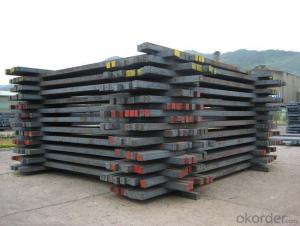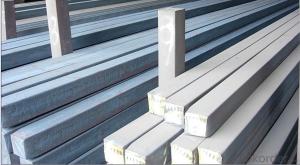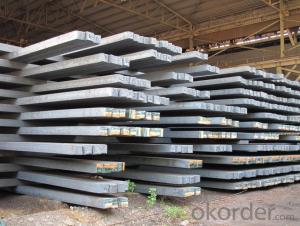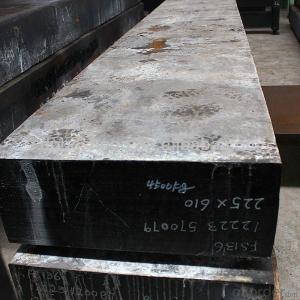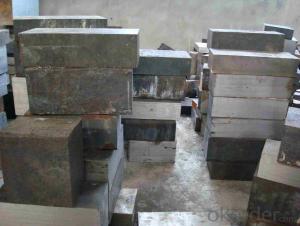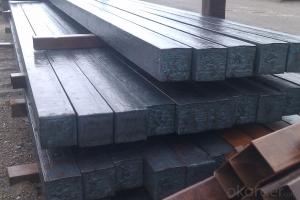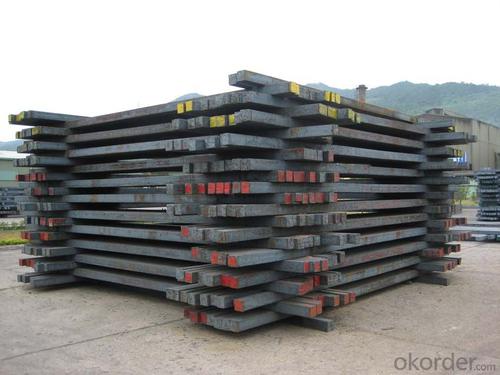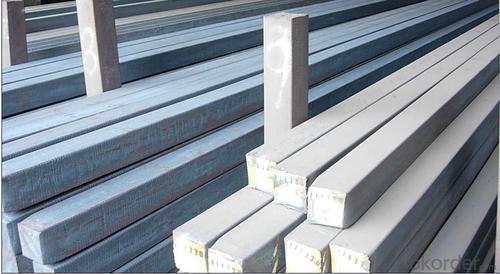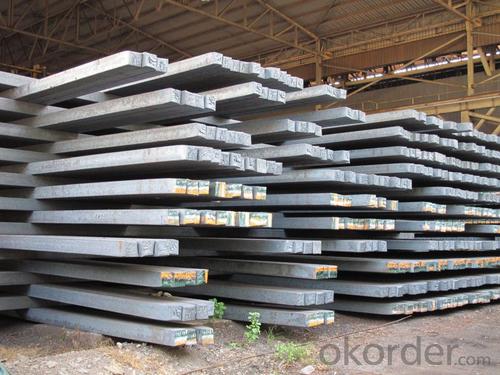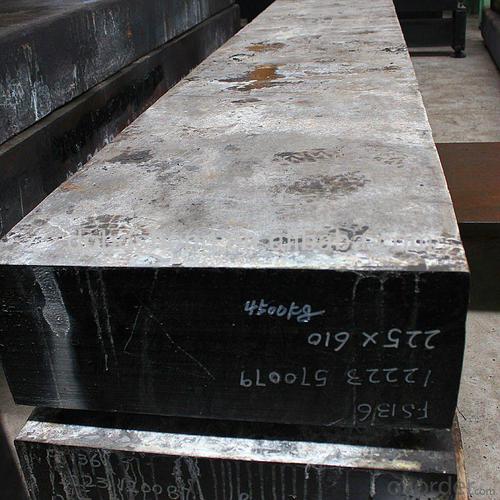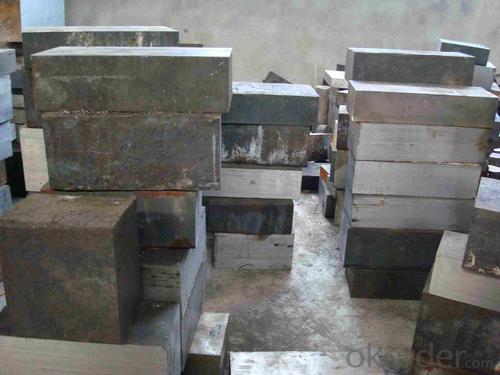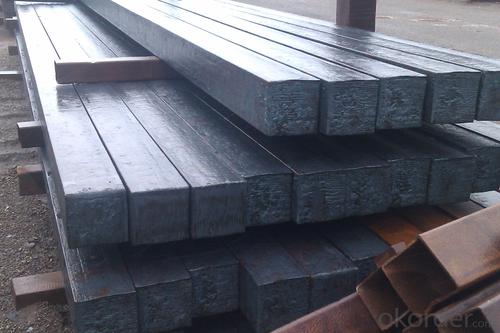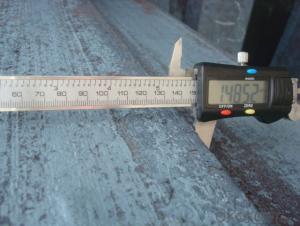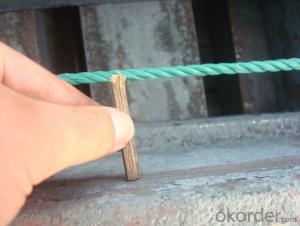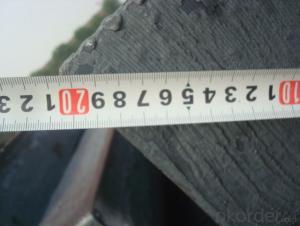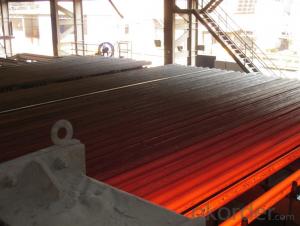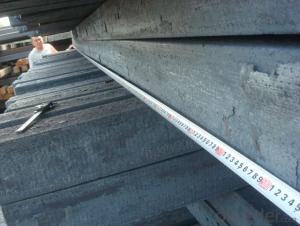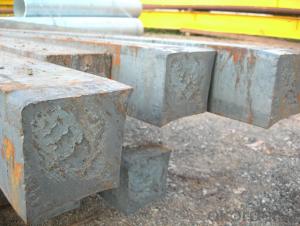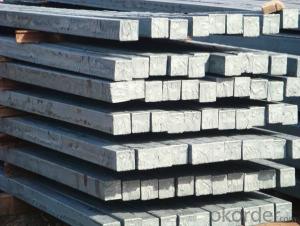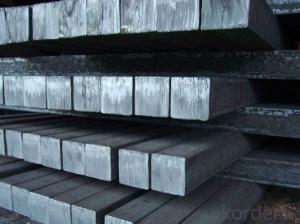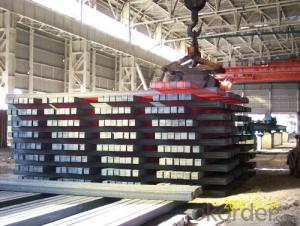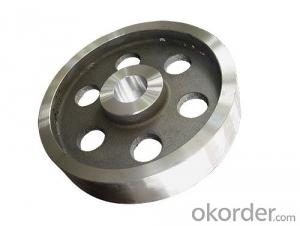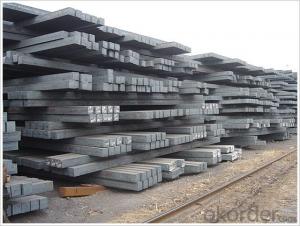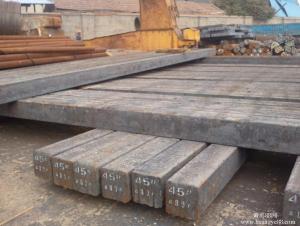Q235/3SP 110MM Blast Furnace Hot Rolled Steel Billet
- Loading Port:
- Tianjin
- Payment Terms:
- TT OR LC
- Min Order Qty:
- 2000 m.t.
- Supply Capability:
- 30000 m.t./month
OKorder Service Pledge
OKorder Financial Service
You Might Also Like
Description of Q235/3SP 110MM Blast Furnace Hot Rolled Steel Billet
Our hot dip galvanised steels consist of a steel substrate with a metallic zinc coating applied by means of a continuous hot dip galvanising process. Metallic zinc coatings are available in steel grades ranging from steel for bending and deep drawing applications, to structural steels and high yield strength steels.
A glossy surface finish obtained under specific skin-pass conditions (either non-skin-passed or skin- passed with smooth cylinders to obtain low roughness) can be provided if required at time of enquiry.
Advantage of Q235/3SP 110MM Blast Furnace Hot Rolled Steel Billet
Uncoated CR steel sheet With the features of in line with the international highest standards in demension and shape, excellent surface finish and properties, the products are mainly used in home appliance and automobile industries.
Galvanized steel sheet(include HDG and EG)
With the features of good corrosion resistance, the products are mainly used in automobile, home appliance, electronics, building and machinery manufacture industries, etc.
Precoated steel sheet With the features of enviromental protection and good processablility, long lasting surface durability, rich in colors, the products are maily used in building, home appliance and furniture industries, etc.
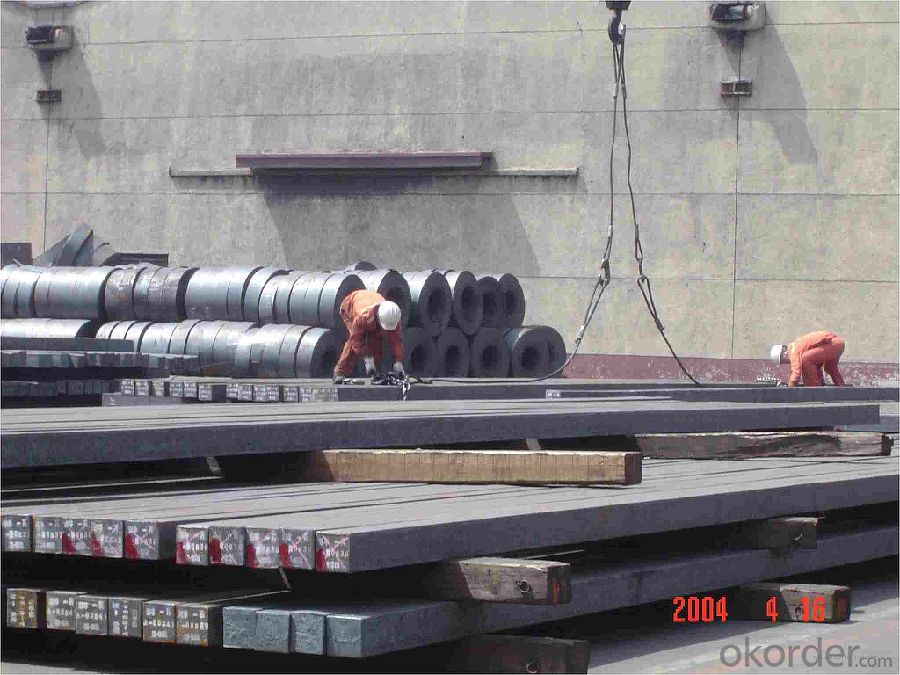
Applications of Q235/3SP 110MM Blast Furnace Hot Rolled Steel Billet
Our hot dip galvanised steels can be used in a very wide range of applications for industrial markets, both indoors and outdoors. Some of the most common applications are:
Building: wide sections for roofing and cladding, doors, door frames, metallic ceilings, partitions, structural members etc
Domestic appliances: all appliances for this sector (both white and brown goods) are manufactured with hot dip galvanised steels
Miscellaneous: electrical cabinets, aeraulic components, air conditioners, road signs etc
Zinc hot dip galvanised steel is suitable for contact with foodstuffs under certain conditions, as specified in European directive 89/109/EEC and French standard NF A 36-712-1. Please contact us for further information on this subject.
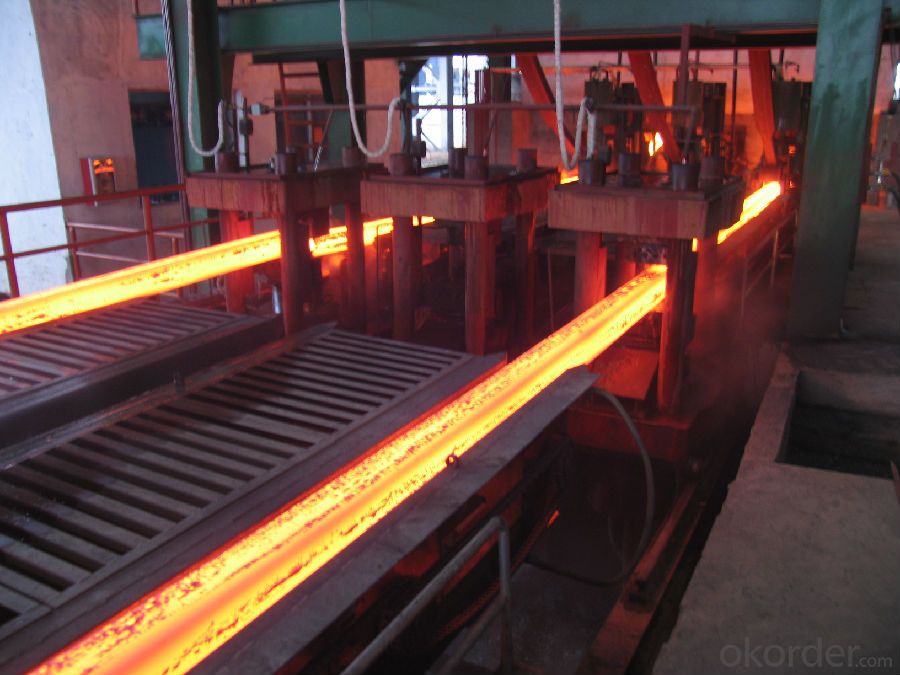
Specifications of Q235/3SP 110MM Blast Furnace Hot Rolled Steel Billet
Quality | Q/BQB 440-2003 | JIS G3312-1994 JIS G3321 | EN 10326-2004 | ASTM A653-02a |
EN 10327-2004 | (BASE PLATE) | |||
(BASE PLATE) | ||||
Commercial Steel | DC51D | SGCC SGLCC | DX51D+Z DX51D+AZ | CS Type A/B/C |
Forming Steel | St01,St02,St03 | SGCD1 SGLCD1 | FS Type A, Type B | |
Drawing | DC52D /DC53D | - | DX52D+Z DX52D+AZ | DDS TYPE A/C |
Steel | DX53D+Z DX53D+AZ | |||
Structural | S280GD (StE28) | SGC400 SGLC400 | S280D+Z DX54D+AZ | SS275 |
Steel | S350GD (StE34) | SGC440 SGLC440 | S350D+Z S350D+AZ | SS340 Class1 |
FAQ of Q235/3SP 110MM Blast Furnace Hot Rolled Steel Billet
We have organized several common questions for our clients,may help you sincerely:
1. How Can I Visit There?
Our company is located in Tianjin City, China, near Beijing. You can fly to Tianjin Airport Directly. All our clients, from home or aboard, are warmly welcome to visit us!
2. How Can I Get Some Sample?
We are honored to offer you sample.
3. Why choose CNBM?
Our delivery time about 15-20days for standard sizes, if you have other requirements like hardness, quanity and width ,it is about 20-40days. But don't worry we also try our best for the delivery time ,because time longer and our cost is higher.
- Q: How are steel billets used in the manufacturing of power generation equipment?
- The manufacturing of power generation equipment relies heavily on steel billets, which are indispensable raw materials. These billets, cast from molten steel, take the form of large rectangular or square-shaped semi-finished steel products. They are then either hot rolled or forged to achieve their final shape. Within the power generation equipment context, steel billets are primarily employed in the construction of turbine components, such as turbine blades and rotors. Additionally, they are used in the fabrication of generator casings and other structural parts. The exceptional strength and durability of steel make it the ideal material for these critical components, which must endure high temperatures, pressure, and rotational forces. The process commences with the careful selection of a suitable grade of steel billet, based on the specific requirements of the power generation equipment. Subsequently, the billets are heated to an appropriate temperature and then forged or hot rolled to shape them as desired. This process necessitates precise techniques, such as machining, cutting, and shaping, to achieve the required dimensions and surface finish. Once the turbine components and other parts are formed from the steel billets, they undergo further treatments, including heat treatment, surface coating, and machining. These treatments aim to enhance their mechanical properties and ensure compatibility with the power generation system. Ultimately, the final products are assembled into power generation equipment, which may consist of gas turbines, steam turbines, wind turbine components, or generator sets. Steel billets play a critical role in the manufacturing of power generation equipment as they provide the necessary strength, durability, and performance required for efficient and reliable operation. The quality and precision involved in the production of steel billets directly impact the overall performance and lifespan of the power generation equipment, making them an essential component in the industry.
- Q: What are the main alloying elements used in steel billet production?
- The main alloying elements used in steel billet production are carbon, manganese, silicon, and chromium.
- Q: What are the main factors affecting the toughness of steel billets?
- There are several main factors that can affect the toughness of steel billets. 1. Composition: The chemical composition of the steel, including the presence of certain elements such as carbon, manganese, and silicon, can significantly impact its toughness. For example, higher carbon content tends to increase hardness but decrease toughness, while the addition of alloying elements like nickel or chromium can improve both strength and toughness. 2. Heat treatment: The heat treatment process, including the rate of cooling and the temperature at which it is performed, can have a significant effect on the toughness of steel. Quenching and tempering are common heat treatment techniques used to enhance the toughness of steel by controlling the microstructure and reducing the presence of brittle phases. 3. Microstructure: The microstructure of steel, which is determined by factors such as cooling rate, grain size, and phase distribution, can greatly influence its toughness. Fine-grained structures tend to exhibit better toughness compared to coarse-grained ones, as smaller grains can inhibit crack propagation. 4. Impurities and inclusions: The presence of impurities and inclusions in steel can negatively impact its toughness. These impurities can act as stress concentrators, leading to localized failure and reduced overall toughness. Therefore, the steelmaking process needs to ensure proper purification and removal of impurities. 5. Manufacturing processes: Various manufacturing processes, such as rolling or forging, can influence the toughness of steel billets. These processes can induce residual stresses and introduce defects that can affect the material's overall toughness. Proper control and optimization of these processes can help enhance the toughness of steel billets. 6. Service conditions: The specific application and service conditions of the steel billets also play a role in determining its toughness requirements. Factors such as temperature, stress levels, and exposure to corrosive environments can impact the material's toughness performance. Understanding and accounting for these conditions is crucial in selecting the appropriate steel grade and ensuring long-term durability. In summary, the main factors affecting the toughness of steel billets include composition, heat treatment, microstructure, impurities, manufacturing processes, and service conditions. By carefully considering and optimizing these factors, manufacturers can produce steel billets with the desired toughness properties for various applications.
- Q: Are steel billets used in the production of construction equipment?
- Steel billets are a frequently employed resource in the manufacturing of construction equipment. Typically hot-rolled or forged, these semi-finished steel products assume diverse shapes and sizes. As a result, they serve as the foundational material for constructing elements like beams, plates, rods, and structural parts in construction equipment. By utilizing steel billets, the end product is fortified with durability, strength, and dependability, rendering it apt for demanding tasks within the construction sector.
- Q: What is the typical weight of a steel billet?
- The weight of a steel billet can differ based on its size and purpose, resulting in a range of common weights between 1,000 and 5,000 pounds (450 to 2,270 kilograms). This weight range grants flexibility in manufacturing processes and enables diverse applications across industries like construction, automotive, and manufacturing. It is crucial to acknowledge that distinct weight prerequisites might vary according to the steel billet's intended use and specifications.
- Q: How are steel billets used in the manufacturing of hydraulic cylinders?
- Steel billets are used in the manufacturing of hydraulic cylinders as the raw material. These billets are carefully shaped, machined, and processed to create the cylinder's main body, ensuring its strength, durability, and resistance to pressure. The steel billets are precisely cut, heated, and forged into the desired shape, forming the base structure of the hydraulic cylinder.
- Q: What is the process of hot rolling steel billets?
- The process of hot rolling steel billets involves heating the billets to a high temperature and then passing them through a series of rollers to reduce their thickness and shape them into desired forms such as sheets, plates, or bars. This process improves the mechanical properties of the steel and enhances its overall quality and usability.
- Q: Can steel billets be used in the production of mining equipment?
- Steel billets, being semi-finished products, find extensive use in the manufacturing industry for the production of mining equipment. The robustness and durability of steel make it an ideal material for mining equipment, which often operates in tough and demanding conditions. By processing and shaping steel billets, essential components like gears, shafts, frames, and buckets can be created, all of which are vital for mining equipment. Moreover, steel billets can be easily welded, machined, and heat-treated to meet the specific requirements and standards of mining equipment. Therefore, steel billets play a critical role in ensuring the strength and dependability necessary for safe and efficient mining operations.
- Q: Can steel billets be used in the production of sculptures and artwork?
- Yes, steel billets can be used in the production of sculptures and artwork. Steel is a versatile and malleable material that allows artists to create unique and intricate designs. The use of steel billets in sculptures and artwork offers durability, strength, and the potential for large-scale installations. Artists can shape, weld, and manipulate steel billets to create a wide range of sculptures, from abstract forms to figurative representations. The industrial aesthetic of steel can also add a contemporary and bold element to the artwork. Additionally, steel can be finished with various techniques such as painting, patina, or polishing, allowing artists to further enhance their creative vision. Overall, steel billets present an exciting opportunity for artists to explore and push the boundaries of their artistic expression.
- Q: How do steel billets contribute to the manufacturing of construction products?
- Steel billets are an essential raw material in the manufacturing of construction products because they serve as the starting point for various steel products. These billets are transformed into different shapes and sizes through processes like rolling, forging, or extrusion, allowing them to be used in the construction of structures such as beams, columns, bars, and rods. The high strength and durability of steel billets make them ideal for withstanding heavy loads and adverse weather conditions, ensuring the safety and longevity of construction projects.
Send your message to us
Q235/3SP 110MM Blast Furnace Hot Rolled Steel Billet
- Loading Port:
- Tianjin
- Payment Terms:
- TT OR LC
- Min Order Qty:
- 2000 m.t.
- Supply Capability:
- 30000 m.t./month
OKorder Service Pledge
OKorder Financial Service
Similar products
Hot products
Hot Searches
Related keywords
